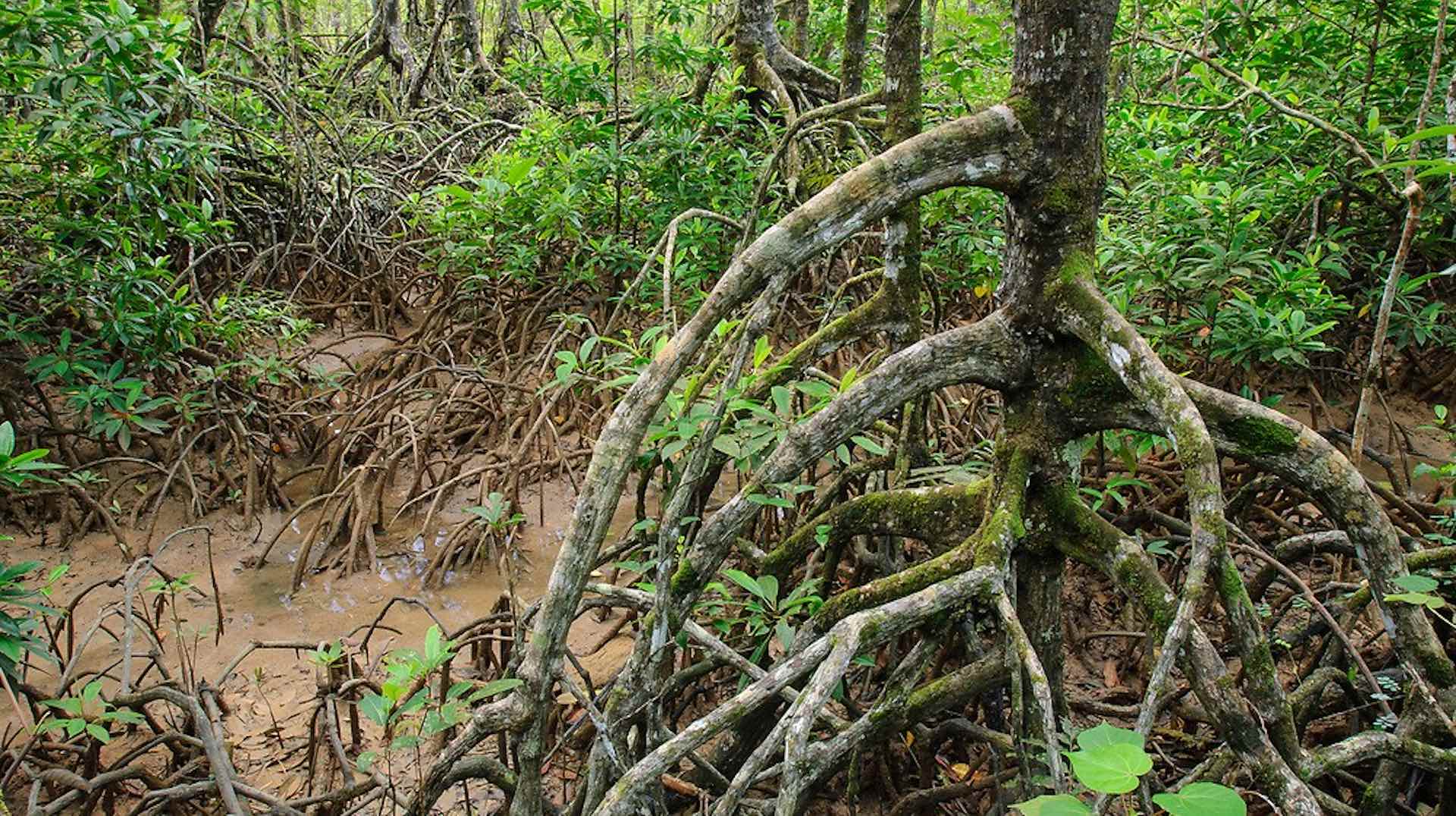Matang Mangrove Forest Reserve (MMFR) is considered as world’s best managed mangrove forest. It is also one of the most productive mangrove forests in the world. It is situated in Perak, Peninsular Malaysia. It covers the total area of 40,466 ha. It is managed by Perak Forestry Department. MMFR is divide into four parts namely Sungai Kerang, Kuala Sepetang South, Kuala Trong and Kuala Sepetang North. These four parts are subdivided into 116 compartments. These compartments are classified into productive and non-productive compartments. The compartments which are undergone timber harvesting and thinning process are called productive compartments and those compartments which are untouched called Virgin Jungle Reserve (VJR). In productive compartments, Rhizophora apiculata and Rhizophora mucronata are the dominant species which are naturally and artificially grown. The thinning processes are conducted at the intervals of 15-20-years in the productive compartments. Then, these productive compartments are cut by clear felling after 30 years.
MMFR is surrounded by different industries and charcoal kilns. The effluents of these industries are discharged in MMFR river areas. Mangroves have the capacity to trap sediments that results into sedimentation. The high rate of sedimentation deposit results in the accumulation of elements. As mangroves have capacity to survive in heavy metals pollution, mangroves are considered as an indicator of heavy metal pollution. Furthermore, mangrove productivity relies on nutrients and elements storage, so it is important to know the elemental composition in mangrove ecosystem. There are few studies conducted on elemental composition in mangrove ecosystem. A study has been conducted in MMFR to examine the elemental composition. Six compartments were selected for sampling, three from Kuala Sepetang namely. Compt. 18, 31 and VJR (Compt. 42), and three other Compt. from Kuala Trong, i.e., Compt. 71, 74 and VJR (Compt. 55). Compartments 18 and 31 are 15 years old, while Compt. 71 and 74 are 25 years old (Figure 1). VJR of Compt. 42 (Kuala Sepetang) and 55 (Kuala Trong) are taken as a control to compare the elements with the corresponding compartments of their areas. Leave, root and sediment samples were collected from these compartments. Dominant species, Rhizophora apiculata was selected for collecting the samples of leave and root. Sixteen elements namely δ15N, δ13C, Cd, Cu, Pb, Zn, Mg, Mn, Fe, K, Na, Ca and P%, S%, N%, C% were selected to examine the elemental composition of MMFR. Stable isotopes tool was also used to identify the significant differences in elemental concentrations between sediment, leave and root samples due to effects of environmental condition. Stable isotopes analysis is a commonly used technique to carry out various types of environmental assessment and monitoring, which gives an overview of biogeochemical processes over time.
Figure 1: (a) Map of Malaysia with Matang area and Perak state, (b) MMFR and state of Perak, (c) encircled sampling points
Based on current study, compartment comparison gives the following average elemental concentration trend: Cd(S) < Pb(S) < Cu(S) < Zn(S) < Mg(S) < Mn(L) < K(L) < Fe(S) < Na(R) < Ca(R) and P%(S) < S%(S) < N%(L) < C%(R) in leaf, root and sediment samples. Leaves, roots, and sediment analysis for six compartments showed similar average elemental concentrations. The difference in elemental concentration is attributed to age or location. The mangrove forest regulates elements better than other forests. Sediments and roots are the main storage spaces for elements in the sampled mangrove area hence depicting that above-ground biomass is not a good sink for elemental storage. Sediment results however displayed an increase in elemental composition over time as compared to roots and leaves. Many elements in the three classes exhibited significant differences within the three age groups. These mangrove ecosystems have a high potential for carbon sequestration in sediments. Concentrations of Cu, Cd, Pb, Zn, Mn, Fe, P, and S were very high, particularly in sediment samples, which could be due to heavy metal pollution. The sources of these heavy metals and other elements such as N, P, and S, among others, can be from industries and agricultural activities in the catchment of the mangrove ecosystem under study. It is suggested to determine the risk assessment status of elemental concentration in sediments of the MMFR. This study provides baseline data for elements of different aged compartments, and it can be used for further research, comparison to different mangrove sites, and devising management policies.
All the elements in mangrove leaves, except for Cu, C, and S, have an impact on compartment variation, and for Rhizophora apiculata species aged 15 from other compartments and ages. Elements Fe, K, Zn, Mg, and Na have an impact on the variations between compartments 18 and 31. For mangrove sediment, compartments 18, 42, 71, and 74 were influenced by Cd, P, N, C, and S based on the three mangrove age groups.
To know about elemental composition in MMFR, readers can consult this publication.



